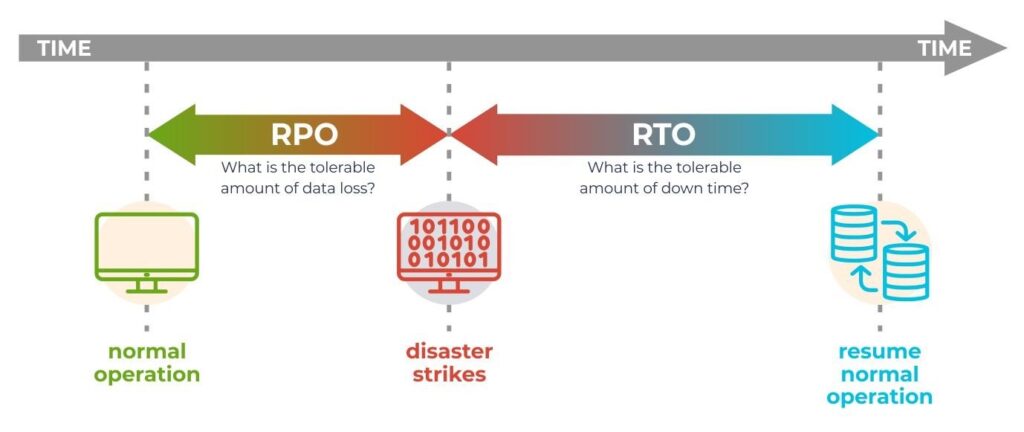Backup & Disaster Recovery is a system put in place to back up and recover your business, should disaster strike. A disaster is an event that causes your business a high level of downtime, such as a cyber attack, fire, flooding or even human error. Our advanced solutions provided by Acronis, creates both physical and cloud backups of your company data, and also integrates a Disaster Recovery Plan to have you up and running as fast as possible.
We’ve taken some common questions about Backup & Disaster Recovery and answered them, so you can understand the value and business-saving features you can expect from BDR.
Simply having backups isn’t BDR. Although having backups is a good start, they don’t maintain business continuity, which is where the ‘recovery’ part comes in.
BDR regularly performs backups of your entire company data every 20 minutes. It stores these backups both onsite and in an offsite location via the cloud. This means there is always accessible data available no matter what type of disaster occurs. These backups are regularly tested (every 3 months) to ensure they are able to fully restore company data without anything missing.
Disaster Recovery isn’t only about backups, it’s also about having a plan in place in case you experience a disaster. This is often referred to as a Business Continuity Plan. This usually outlines key individuals responsible for taking action and implementing next steps, this would usually be your Data Protection Officer (DPO). This process is key to mitigating downtime, as it streamlines the recovery process.
Lastly, your BDR plan will define Recovery Point Objectives (RPO) and Recovery Time Objectives (RTO) for your business, helping to identify the best strategy to take when recovering your business. They detail the amount of downtime the business can survive with and the threshold of lost data the business can tolerate.
It’s not as expensive as downtime. The chances are, you know how much it costs to run your business down to the minute. Take some time to consider how many minutes it would take for the monthly cost of BDR to be paid for.
To quickly work this out, it’s recommended by Gartner to use the following formula:
Downtime cost = minutes of downtime x cost-per-minute
For a small business, use £355 as cost-per-minute. For medium and large, use £7472.
As an example, if you’re a small Kent business that experiences 10 hours of downtime, you could be looking at a potential loss of £213,000. We’re pretty sure that’s not in your budget!
New equipment can and does fail – it’s why hardware warranties are so popular. However, a warranty won’t keep your data safe, and it won’t keep your business running while your server infrastructure is being rebuilt. In fact, hardware failure represents up to 40% of all data loss incidents according to a study completed by US research university, Pepperdine University
Regardless of how new your equipment is, BDR prevents hardware dysfunction and server outages from causing your business serious harm. And don’t forget, it’s a one-stop-shop for protecting against other threats such as malicious attacks, ransomware, natural disaster and vandalism.
In addition, BDR provided by our partners Acronis is simple to implement with your existing systems, allowing you to backup and restore with just a click.
This is a good first step, but it still leaves you vulnerable to issues affecting the site. If it’s damaged or destroyed by fire or flood then all your equipment will be gone, even your spares. BDR stores data offsite as well as onsite, following the 3-2-1 rule;
- 3 – One primary copy of data, plus two additional copies
- 2 – Save all backups to two media formats (e.g physical & cloud)
- 1 – Keep a backup offsite
It’s also worth considering when your spare equipment was last tested, and whether it’s a similar spec to your existing kit. If not, it might cause you further downtime or not be suitable for hosting your data infrastructure.
We’ve unfortunately heard of many Kent businesses falling victim to both cyber attacks and natural disaster. Simply put, cybercriminals don’t care who you are or where your business is located – as long as they can access your systems, they will pursue their mission of extorting your business for monetary gain.
Have a look at our case study about a Kent business that nearly lost £1.6 million to cyber criminals, and had to have their whole systems rebuilt as a result of not having BDR in place.

